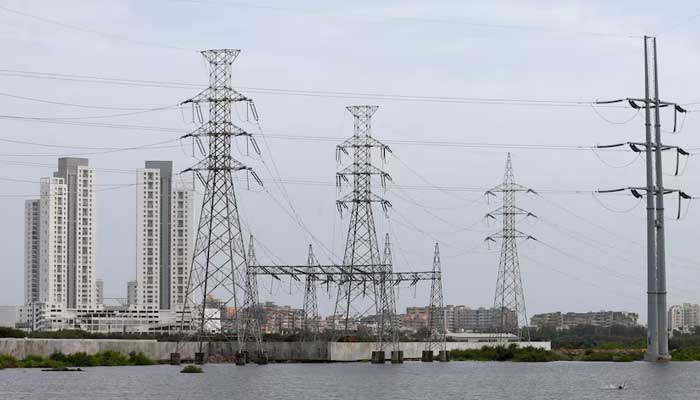
- NTDC issues merit order for negotiations with IPPs running on expensive fuel.
- Halmore Power is producing electricity at a staggering rate 61.23 Rs per kWh.
- Uch has the lowest production cost at Rs 3.11 per kWh via natural gas.
ISLAMABAD: The government has successfully concluded negotiations with 14 residual fuel oil (RFO)-based independent power producers (IPPs) under ‘take and pay’ terms, The News reported on Sunday.
The development follows Prime Minister Shehbaz Sharif’s announcement regarding the gradual closure of obsolete power plants across the country, aimed at combating soaring electricity costs and improving energy efficiency.
Additionally, the National Transmission and Dispatch Company (NTDC) issued a revised Order of Merit, prompting the Department of Energy’s task force to begin negotiations with operators of power plants using expensive fuels such as diesel to high speed (HSD), RFO and re-gasified liquefied natural gas.
The IPP with the highest production cost is Halmore Power, running on HSD, producing electricity at Rs 61.23 per kWh, while Uch, using natural gas, has the lowest production cost at Rs 3.11 per kWh.
Besides Halmore, others are Saif Power and Sapphire Electric Co, both using HSD at a price of Rs 60.8 per kWh. Orient Power Company is also based on HSD, generating electricity at Rs 60.2 per kWh.
Engro PowerGen runs on HSD, producing electricity at Rs 55.2 per kWh, while NPPMC Baloki (CC) and QATPL Bhikki (CC) use HSD to generate electricity at Rs 53.2 and Rs 51.6 per kWh, respectively.
Muzaffargarh B-III (Unit 6), powered by RFO, generates electricity at Rs 50.8 per kWh, and Punjab Thermal Power, running on HSD, generates electricity at Rs 50 per kWh.
Muzaffargarh B-III (Unit-5), Muzaffargarh BI (Unit-2) and Muzaffargarh BI (Unit-1) are RFO-powered plants producing electricity at Rs49.5, Rs48.2 and Rs47.5 per kWh respectively.
Similarly, Muzaffargarh BI (Unit-3) and Muzaffargarh B-II (Unit 4) operate on RFO with generation costs of Rs46.5 per kWh each. The HSD-based NPPMC HBS (CC) generates power at Rs 44.1 per kWh, while Saba, running on RFO, generates power at Rs 43.9 per kWh.
Jamshoro B-II (unit 2) uses RLNG at a cost of Rs43.5 per kWh, while Jamshoro B-II (unit 3) operates on RLNG and RFO at Rs42.4 and Rs42.1 per kWh, respectively. Jamshoro B-II (Unit 4) operates on RLNG and RFO with generation costs of Rs41.5 and Rs40.1 per kWh, respectively. Hubco, an RFO-based plant, produces electricity at Rs 40.7 per kWh.
Muzaffargarh B-III (Unit-6) and Muzaffargarh B-III (Unit-5) are RLNG-fired plants with generation costs of Rs40.4 and Rs39.3 per kWh respectively.
Altern Energy (Ph-I) runs on RLNG at Rs 39.6 per kWh, while Muzaffargarh BI (Unit-2) and Muzaffargarh BI (Unit-1), both based on RLNG, generate electricity at 38 .4 Rs and 37.9 Rs per kWh. kWh respectively.
Jamshoro BI (unit 1) operates on RFO at Rs 37.5 per kWh, while Muzaffargarh BI (unit 3) and Muzaffargarh B-II (unit 4) operates on RLNG with generation costs of Rs 37.1 and Rs 37 .0 per kWh respectively. .
PakGen Power and Lalpir are RFO-powered plants generating electricity at Rs36.2 and Rs35.8 per kWh respectively. Davis Energen runs on RLNG with a production cost of Rs34.9 per kWh, and Liberty Power Tech, powered by RFO, produces electricity at Rs34.3 per kWh. Nishat Chunian and Narowal Power operate on RFO, generating electricity at Rs33.4 and Rs33.2 per kWh, respectively.
KEL, Attock Gen and Nishat Power are RFO based plants with generation costs of Rs32.9, Rs32.3 and Rs31.5 per kWh, respectively.
FKPCPL uses RLNG and produces electricity at Rs 31.4 per kWh, the same cost as Atlas Power and Altern Energy (Ph-II), which run on RFO and RLNG respectively. Finally, Rousch, powered by RLNG, produces electricity at Rs28.8 per kWh. The government aims to speed up negotiations to secure cost reductions and increased efficiency in the energy sector.
